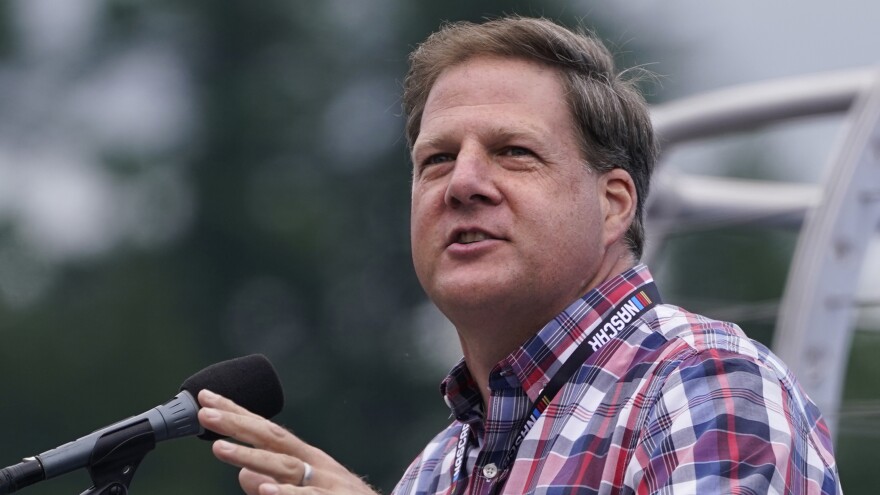New Hampshire has two congressional districts, which means every 10 years, state lawmakers have to draw one line between them.
For the last 140 or so years, that line hasn't changed much.
"I heard somebody say the original districts have been pretty much the same since the 1800s, when we were moving stuff around the state by steam train, horse and wagon, and riverboats," state Rep. Steven Smith, who's deputy House speaker, recently told colleagues.
The Republican urged lawmakers to blow up the state's current map.
"Every 10 years it is the job of the legislature to come up with a plan," he said. "Not figure out if the old plan is OK — can we maybe just tweak it a little? But to come up with a plan that makes sense today."
The GOP-led legislature followed through, passing a map to dramatically redraw the districts. But the plan fell apart, with a fellow Republican standing in the way.
Sununu's veto
With their map, GOP lawmakers in New Hampshire aimed to give a boost to Republicans in the 1st District, which covers the eastern portion of the state, while giving Democrats a boost in the 2nd District, which borders Vermont to the west.
On top of that, it placed the two incumbent U.S. representatives — both Democrats — into the same district.
These types of political calculations have been made across the country this year amid redistricting, with Republicans or Democrats in power either shoring up the districts of their incumbents, or trying to squeeze out the other party.
The end result is a continued decrease in the number of districts considered competitive nationally.
In New Hampshire, party leaders openly talked about their desire to draw a GOP-friendly seat after winning control of the legislature in 2020. But Republican Gov. Chris Sununu bucked the national trend when he vetoed the map last month.
"I made it pretty clear, and they didn't want to take that advice, and I don't think my veto on any of those maps shocked them," Sununu recently told reporters.
For months, the three-term governor talked openly about a map needing to pass what he dubbed a "smell test." Essentially, Sununu wanted both of the districts to remain competitive.
"I think Republicans can win both congressional districts," he said. "In fact, I'm very confident Republicans are going to win both congressional districts."
Sununu is optimistic about a GOP wave this November, but Republicans have only carried the 2nd District once since 2006.
The 1st District, currently held by Democrat Chris Pappas, has proven to be a true swing district for nearly two decades. There, a small boost in GOP voters could have made the difference, harming Pappas' chances for reelection.
He, like a lot of Democrats, has criticized the state legislature's process.
"What we saw happen in the legislature really didn't speak to the way it is usually done in New Hampshire," Pappas said after filing his formal paperwork for reelection. "At every step of the way, legislators were influenced by politics. They wanted to create one district where it was a foregone conclusion that a certain party would win."
Five small towns
With Sununu's veto, the political process formally ended, and a legal one took over. The New Hampshire Supreme Court stepped in and, a day before the candidate filing period opened, approved a politically neutral map drawn by an outside expert.
It makes only minor changes to the 2010 map, moving just five small towns to balance the district populations.
Inside the state capitol, this entire process was center stage for weeks.
But in one of those towns ultimately redistricted, Jackson, in the bucolic White Mountains, it barely seems to have registered. Outside of a coffee shop, Margaret Graciano said she wasn't aware of the redistricting, "but I feel OK about it."
Tom Seidel, her husband, liked that the map wasn't tilted, noting he prefers "the idea of potentially having two purple districts rather than a blue and red district."
Outside political analysts also forecast the races as competitive, including the nonpartisan Cook Political Report, which has labeled both districts as toss-ups.
Copyright 2022 New Hampshire Public Radio




